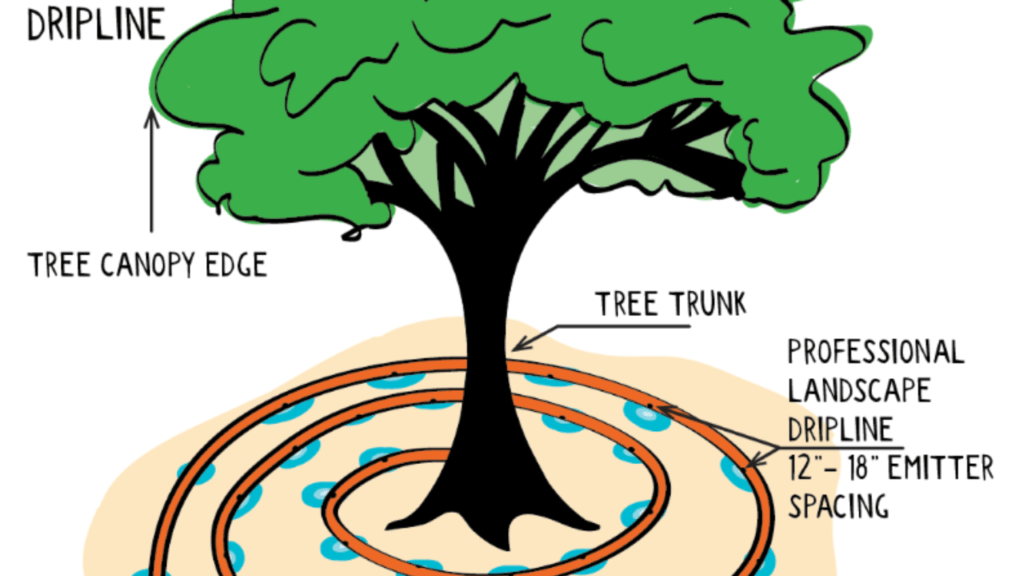
Top-Rated Watering Systems for Trees: Efficient Solutions for Healthy Growth
Ensuring trees receive adequate water is crucial for their health and growth, but it can be challenging to provide consistent hydration. This is where a reliable watering system for trees comes into play. In this article, we’ll explore various watering systems for trees, discuss their benefits, and provide tips on choosing the right one for your landscape.
A quality watering system for trees is essential for ensuring their health and growth. Without consistent hydration, trees may struggle to thrive and become susceptible to disease and stress. When selecting a watering system for your trees, it’s important to consider factors such as the size and type of trees, the climate of your region, and the layout of your landscape. Drip irrigation systems, soaker hoses, and tree watering bags are all popular options for efficiently and effectively providing water to trees. These systems help deliver water directly to the roots, promoting deep and healthy root growth. Additionally, a well-designed watering system can help conserve water and save time and effort in the long run. By investing in a reliable watering system for your trees, you can ensure their continued health and vitality for years to come.
Table of Contents
ToggleImportance of Proper Watering for Trees
Proper watering is crucial for the health and growth of trees. Without consistent hydration, trees can become stressed, vulnerable to disease, and struggle to thrive. It’s important to consider the specific needs of your trees when selecting a watering system. Factors such as tree type, size, and climate should all be taken into account. Drip irrigation systems, soaker hoses, and tree watering bags are all effective options for delivering water directly to the roots and promoting healthy root growth. A well-designed watering system not only supports the health of your trees, but also helps conserve water and save time and effort. By investing in a reliable watering system, you can ensure the continued vitality of your trees for years to come.
Role of Water in Tree Health
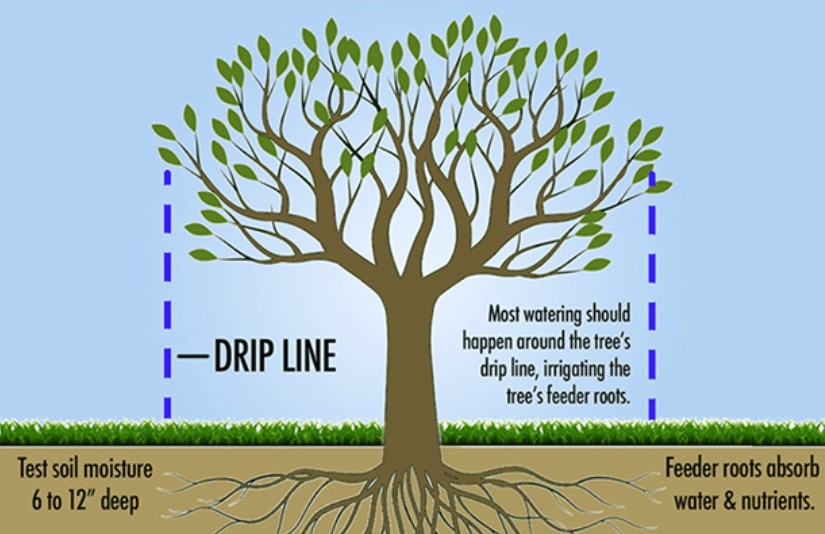
Proper watering is essential for maintaining the health and growth of trees. Without consistent hydration, trees may struggle to thrive and become susceptible to disease and stress. Water plays a crucial role in the overall health of trees, as it helps transport vital nutrients from the soil to the tree’s leaves and branches. Additionally, water is essential for photosynthesis, the process by which trees produce food and energy. Without adequate water, trees may experience wilting, leaf drop, and decreased growth. Proper watering can also help trees withstand environmental stressors such as extreme temperatures and drought. In summary, water is a critical component of tree health, and implementing an efficient and effective watering system is essential for ensuring the continued vitality of trees in your landscape.
Effects of Water Stress on Trees
Water stress can have detrimental effects on the health and growth of trees. When trees are not properly hydrated, they may experience wilting, leaf drop, and reduced growth. In severe cases, water stress can lead to tree decline and even death. Additionally, water stress can make trees more susceptible to pests, diseases, and environmental stressors such as extreme temperatures and drought. It is important to monitor the water needs of your trees and provide adequate hydration to ensure their long-term health and vitality. Implementing a well-designed watering system can help conserve water while also ensuring that your trees receive the proper hydration they need to thrive. By investing in proper watering techniques, you can help your trees withstand water stress and maintain their health and beauty for years to come.
Signs of Watering Issues
can include wilting or drooping leaves, yellowing or browning of the leaves, stunted growth, and leaf drop. These are all indications that the tree is not receiving enough water. On the other hand, overwatering can lead to waterlogged soil, root rot, and mold growth. It’s important to pay attention to the soil moisture levels and adjust your watering schedule accordingly to avoid these issues. Additionally, be mindful of the weather conditions and adjust your watering routine during periods of extreme heat or drought. By being attentive to these signs and adjusting your watering practices, you can help your trees thrive and stay healthy.
Types of Watering Systems for Trees
Drip Irrigation Systems
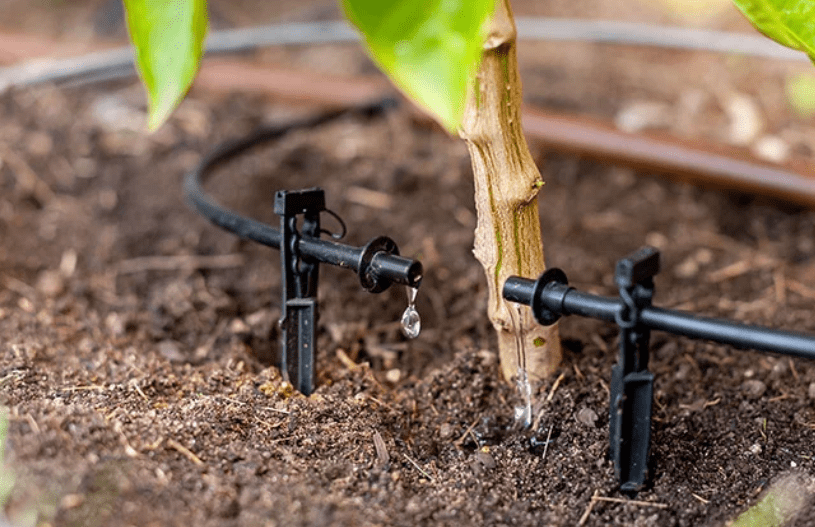
are an effective and efficient way to water your trees. These systems deliver water directly to the base of the trees, minimizing water loss through evaporation and ensuring that the trees receive a consistent and thorough watering. Drip irrigation systems can also be customized to meet the specific needs of different types of trees, allowing you to adjust the flow rate and frequency of watering to best suit the individual requirements of your trees. Additionally, these systems can be equipped with timers and sensors to automate the watering process and ensure that your trees receive the right amount of water at the right time. Overall, drip irrigation systems are a great option for keeping your trees well-hydrated and healthy while also conserving water and promoting sustainable irrigation practices.
Soaker Hoses
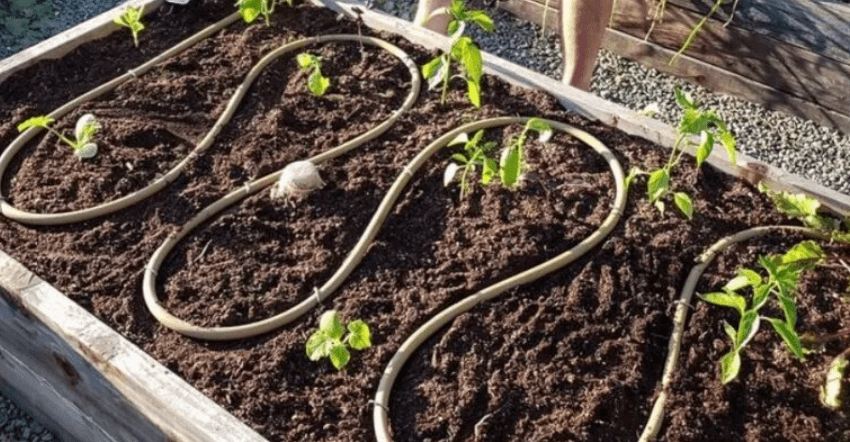
are another excellent option for watering your trees. These hoses are designed to release water slowly and evenly along their length, allowing water to seep into the soil and reach the roots of your trees. This helps to ensure deep, thorough watering and prevents water from being wasted through runoff or evaporation. Soaker hoses are especially helpful for trees with deep root systems, as they can help to deliver moisture to the lower layers of soil where the roots are located. Additionally, soaker hoses can be easily installed and adjusted to reach the entire root zone of your trees, making them a convenient and effective option for tree watering. By using soaker hoses, you can ensure that your trees receive the hydration they need to stay healthy and strong.
Tree Watering Bags
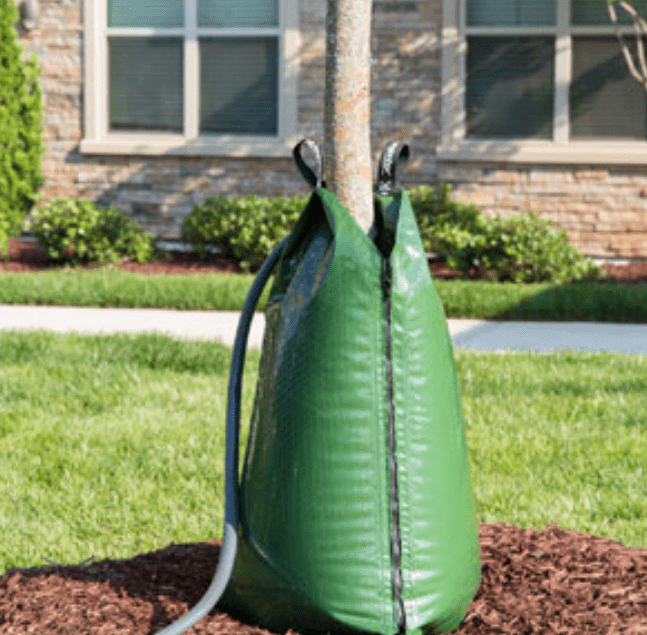
are a convenient and effective way to provide consistent and slow-release hydration to your trees. These bags can be filled with water and placed around the base of your trees, allowing the water to slowly seep into the soil and reach the roots. This helps to prevent water waste and ensure that your trees receive the proper amount of hydration. Tree watering bags are especially beneficial for newly planted trees or trees in drought-prone areas, as they can help promote healthy root development and overall tree growth. By using tree watering bags, you can ensure that your trees receive the consistent and efficient hydration they need to thrive.
Deep Root Watering Systems
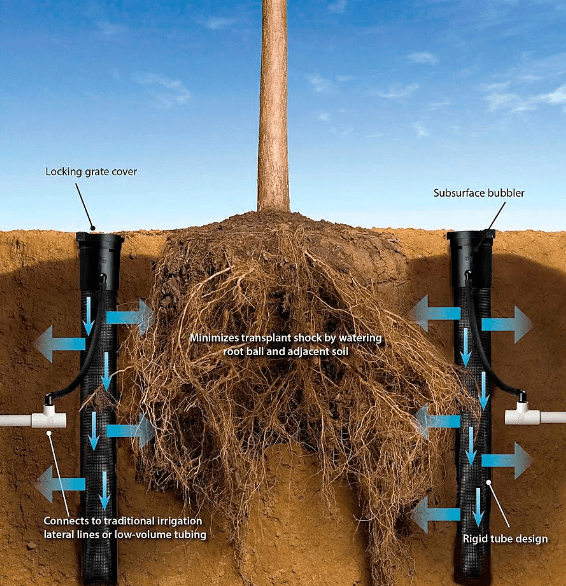
are a great way to ensure that your trees receive the water they need to thrive. These systems deliver water directly to the root zone of your trees, promoting deep, healthy root growth. By using a deep root watering system, you can prevent water waste and ensure that your trees receive the proper amount of hydration. This can be especially beneficial for trees with deep root systems, as it helps to deliver moisture to the lower layers of soil where the roots are located. Deep root watering systems are an effective and efficient way to care for your trees and promote their overall health and growth.
Factors to Consider When Choosing a Watering System
Tree Species and Age
When choosing a watering system for your trees, it’s important to consider the species and age of the trees. Different tree species have different water needs, so it’s important to choose a watering system that can provide the right amount of hydration for your specific tree species. Additionally, the age of the trees can also impact their water needs. For example, newly planted trees or young trees may require more frequent watering compared to older, established trees. By taking into account the species and age of your trees, you can select a watering system that meets their specific hydration requirements and promotes their overall health and growth.
Soil Type and Drainage
are also important factors to consider when choosing a watering system for your trees. Different soil types have different water retention capacities, so it’s essential to choose a watering system that is suitable for the soil type in your area. For example, sandy soil may require a more frequent watering schedule compared to clay soil. Additionally, proper drainage is crucial for the health of your trees. If your soil has poor drainage, it’s important to choose a watering system that can deliver water directly to the root zone without causing waterlogging or standing water. By considering the soil type and drainage in your area, you can choose a watering system that is effective and beneficial for your trees.
Climate and Weather Patterns
play a crucial role in determining the watering needs of your trees. In areas with hot, dry climates, trees may require more frequent and consistent watering to stay healthy. On the other hand, in areas with cooler and wetter climates, trees may need less frequent watering. It’s important to consider the local weather patterns and adjust your watering system accordingly to ensure that your trees receive the proper amount of water. By taking into account the climate and weather patterns in your area, you can choose a watering system that meets the specific needs of your trees and promotes their overall health and growth.
Water Conservation Goals
require us to be mindful of our water usage, especially when it comes to watering our trees. It’s important to consider the type of soil and drainage in your area when determining the watering schedule for your trees. Sandy soil may require more frequent watering, while proper drainage is crucial for the health of your trees. It’s essential to choose a watering system that delivers water directly to the root zone without causing waterlogging.
Climate and weather patterns also play a significant role in determining the watering needs of your trees. In hot, dry climates, trees may require more frequent and consistent watering, while in cooler and wetter climates, they may need less frequent watering. By adjusting your watering system based on local weather patterns, you can ensure that your trees receive the proper amount of water.
Overall, it’s important to be mindful of our water usage and choose a watering system that meets the specific needs of our trees while promoting water conservation. By considering soil type, drainage, climate, and weather patterns, we can effectively water our trees while conserving water for the future.
Installation and Maintenance Tips for Watering Systems
Proper Installation
is key to ensuring that your watering system is effective and efficient. When installing your watering system, make sure to place the emitters or nozzles close to the base of the tree to ensure that water reaches the root zone. Avoid placing them too close to the trunk, as this can lead to waterlogging and root rot. Additionally, use a timer or moisture sensor to automate your watering schedule and ensure consistency.
Regular Maintenance
Regular maintenance of your watering system is crucial for the health of your trees. Check for clogs or leaks in the system and clean or repair any issues as needed. It’s also important to adjust your watering schedule based on seasonal changes and weather patterns to ensure that your trees receive the proper amount of water.
By following these installation and maintenance tips, you can ensure that your watering system effectively delivers water to the root zone of your trees, promoting their health and growth.
Regular Inspection and Adjustment
of your watering system is essential for the health of your trees. By regularly inspecting your system, you can identify any issues such as clogs or leaks and address them promptly. It’s also important to adjust your watering schedule based on seasonal changes and weather patterns to ensure that your trees receive the right amount of water. By taking these steps, you can effectively water your trees while conserving water for the future. Proper installation and regular maintenance of your watering system are key factors in promoting the health and growth of your trees.
Seasonal Adjustments
are crucial for the health of your trees. As the weather changes throughout the year, it’s important to adjust your watering schedule to meet the needs of your trees. During the hot summer months, your trees may require more frequent watering to stay healthy and hydrated. In the cooler fall and winter months, you may need to reduce the frequency of watering as the trees enter a dormant period. By making these seasonal adjustments, you can ensure that your trees receive the proper amount of water at the right times, promoting their overall health and growth. Keep in mind the specific needs of each tree species and adjust your watering schedule accordingly to support their individual requirements. Regular maintenance and seasonal adjustments are essential for the long-term health and vitality of your trees.
Winterization
is an important step in tree care, especially in areas with cold winters. Proper winterization helps protect your trees from the harsh conditions and ensures their survival during the winter months. One way to winterize your trees is to water them thoroughly in the fall before the ground freezes. This helps to replenish moisture in the soil and ensure that the trees can withstand the winter dry spells. Another important aspect of winterization is to insulate the base of young trees with mulch to protect them from freezing temperatures. This helps to maintain a stable temperature around the roots and prevents frost damage. Additionally, pruning and removing dead or damaged branches before winter can help reduce the risk of breakage from heavy snow or ice. By taking these steps, you can effectively water your trees while conserving water for the future. Proper installation and regular maintenance of your watering system are key factors in promoting the health and growth of your trees.
Benefits of Effective Watering Systems for Trees
Promotes Healthy Growth
Proper winterization is important for protecting your trees and ensuring their survival during the winter months. Watering your trees thoroughly in the fall before the ground freezes helps to replenish moisture in the soil and prepare them for the winter dry spells. Insulating the base of young trees with mulch can protect them from freezing temperatures and maintain a stable temperature around the roots. Pruning and removing dead or damaged branches before winter can also reduce the risk of breakage from heavy snow or ice. By taking these steps, you can effectively water your trees while conserving water for the future and promote healthy growth.
Reduces Stress and Disease Risk
Effective watering systems for trees can also reduce stress and disease risk. Proper watering helps to maintain a stable temperature around the roots and prevents frost damage. By replenishing moisture in the soil before winter, you can reduce the risk of winter dry spells that can stress out your trees. Additionally, insulating the base of young trees with mulch can protect them from freezing temperatures and reduce the risk of disease. Pruning and removing dead or damaged branches before winter can also reduce the risk of disease in your trees. Overall, effective watering systems can promote healthy growth and reduce stress and disease risk for your trees.
Contributes to Landscape Sustainability
Proper care and maintenance of trees not only benefits the individual tree but also contributes to landscape sustainability. By insulating the base of young trees with mulch and effective watering systems, you can protect them from freezing temperatures and maintain a stable temperature around the roots. This can help promote healthy growth and reduce stress and disease risk for the trees. Additionally, pruning and removing dead or damaged branches before winter can also reduce the risk of breakage from heavy snow or ice and promote overall tree health. By taking these steps, you are not only caring for the individual trees but also contributing to the overall sustainability of the landscape.
In conclusion, investing in a top-rated watering system for your trees is essential for their healthy growth and overall well-being. By choosing the right system, you can ensure efficient water distribution and promote strong root development. Whether you opt for a drip irrigation system, soaker hose, or automatic watering system, the key is to provide consistent and adequate hydration for your trees. With the right watering system in place, you can enjoy beautiful, thriving trees for years to come.
Frequently asked questions And Answer
The best watering system for trees is a soaker hose or a drip irrigation system. These systems deliver water directly to the roots, promoting healthy and efficient growth.
The frequency of watering depends on the type of tree, soil, and climate. In general, newly planted trees should be watered more frequently, while established trees may only need watering during dry periods.
Yes, overwatering can be detrimental to trees as it can lead to root rot and other diseases. It’s important to monitor the soil moisture and adjust watering accordingly.
Yes, soaker hoses and drip irrigation systems are both eco-friendly options as they minimize water waste by delivering water directly to the roots.
Regularly check for leaks, clogs, and proper water distribution to ensure that your watering system is functioning efficiently. Additionally, consider investing in a timer to automate watering schedules.
Using a watering system ensures that trees receive the right amount of water directly at their roots, promoting healthy growth and reducing water waste.
While sprinkler systems can be used to water trees, they are not as efficient as soaker hoses or drip irrigation systems. Sprinklers can lead to water evaporation and may not deliver water directly to the roots.
When choosing a watering system, consider factors such as the size and type of trees, soil type, climate, and water conservation. It’s important to select a system that meets the specific needs of your trees for optimal growth and health.
